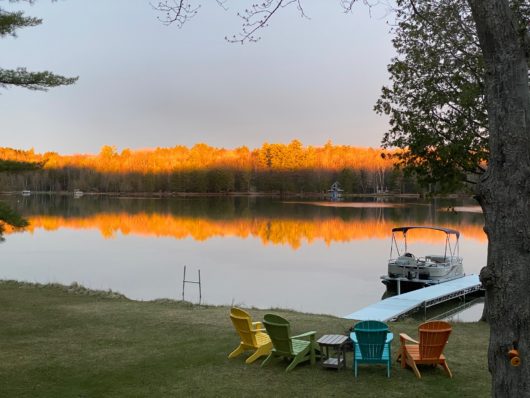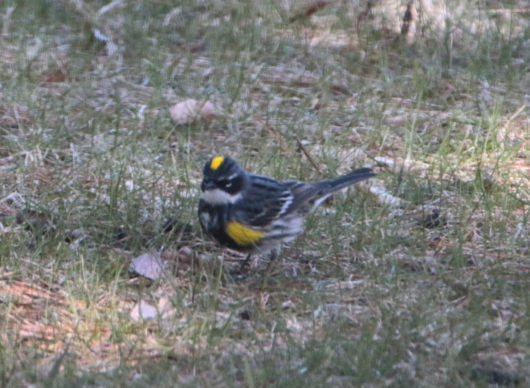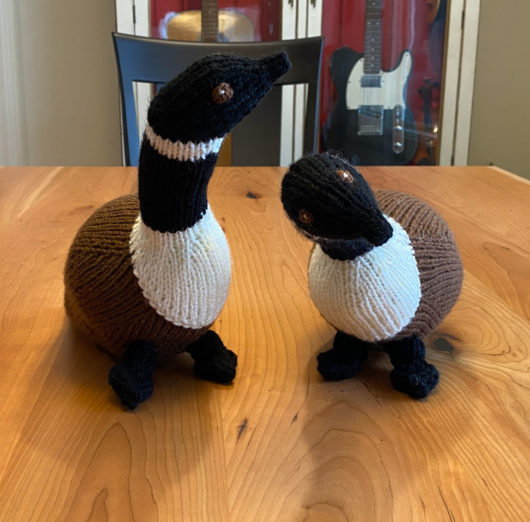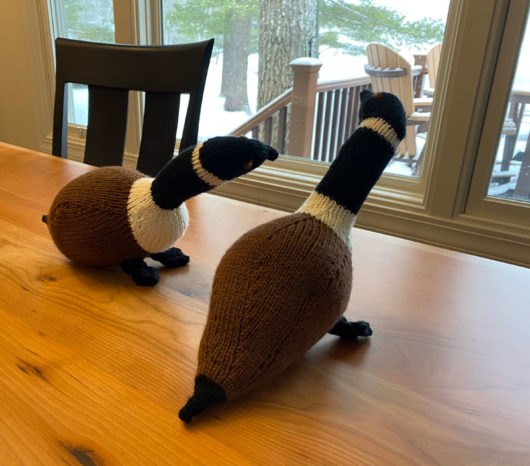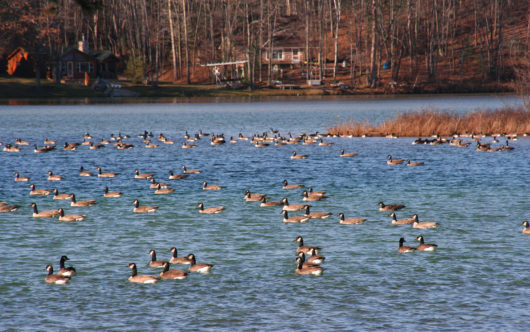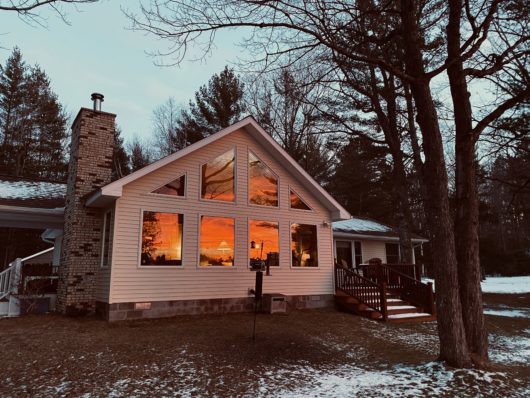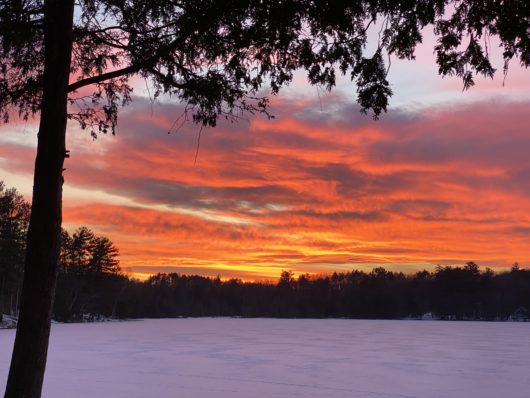
Well, well. Yep. That’s me paddling off into the sunset. No worries. I’m a (basically) healthy 71-year old. And of course I’m a voracious knitter and intend to remain so. I started this blog fifteen years ago on May 30, 2009 and it just feels like the right time to close this chapter. My apologies that I had to disable comments several months ago. The spammers found me and only running silent gave me any peace. If anyone wants to follow what I’m knitting, you can find me on Ravelry. I’m Noreen1009.
When my son built my blog and gave it to me as my Mother’s Day present I had no idea it would be so much fun. I’ve loved featuring life on the Sunrise Side of Michigan’s lower peninsula and Hillman’s Long Lake. And throughout it’s been knitting, knitting, and more knitting. What could be better?
I thought I’d close out the blog with a sort of greatest hits post. Google Analytics tells me where most of my traffic goes. Plus I have a few favorites of my own that I decided to include.
My 2011 post on Lijuan Jing’s Vortex is the hands down reader favorite.

This post’s popularity is helped out by the designer giving me permission to post extensive errata to significant parts of her pattern that don’t seem to have been published anywhere else.
My 2010 post on the afghan I was knitting on July 20,1969 while Neil Armstrong walked on the moon still finds its way to a fair number of eyeballs.

Lots ‘o Red Heart in this one. More than 50 years after I cast off the space program’s pretty much in shambles but the afghan soldiers on. As a sixteen-year old I had no thought that my grandchildren would be cuddling under it.
A new contender for blog traffic winner is my own 2022 Gartergantuan creation in 63 skeins of Brown Sheep Lamb’s Pride Worsted.

Sixty-three 113-gram skeins. That’s not a typo. It’s shown here on a queen-sized bed. I managed to knit my own weighted blanket. Brown Sheep featured Gartergantuan on its Instagram feed.
This next greatest hit is a personal favorite. It’s the story of repairs to my grandson’s knitted “Big George.” Here’s how George arrived in my ER after a nighttime eruption of vomit and a needed trip through the washing machine.

Here’s the original 2010 post to check out Big George in his pristine state.
My adaptation of Yuvinia Yuhadi’s Ubiquitous chair cover is another personal favorite post.

I used the designer’s pattern to understand the number of stitches I’d need and the general construction. The rest was me fiddling around trying to reproduce the feel of a bedspread I remember from my grandmother’s house.
While I’m thinking about designers, here are posts on my two Ravelry-published free patterns, Sunrise Side Bear and Acorn Hill Pony.
Gosh. Choosing what to include in this good-bye post is harder than I thought.
I don’t knit many sweaters, but here’s one I especially like that I knit for one of my brothers.

I knit boatloads of shawls and wrote about most of them here. Ute Nawrotil’s Waiting for the Sun is probably the one I’m most proud of. I was afraid to cast on, thinking it would be beyond my skill set. But it worked out. Big time, I think.

Please have a wander through the archives. There’s a lot of knitting here. Ravelry tallies my yardage knit during approximately the 15-year span of this blog at 387,407. That’s more than 220 miles of yarn. Lordy!
If Michigan’s “up north” is your passion, as it still is for me, more posts with lasting click-power are Whitefish Point Cemetery, Rogers City, and public folk art along US 23 between Alpena and Harrisville. Lots of Michiganders struggling with Canada Geese and their mountains of slimy tootsie roll droppings find some of my goose posts amusing.
The many-year saga of the Eastern Kingbirds who raised their brood in the cupholder on our lake-side dock bench somehow seems like a good place to close out the blog.


These kingbirds are fierce and devoted mothers.
My son’s 2009 Mother’s Day blog gift meant and means more than I can express either to him or to you. It’s been a heck of a run! My sincere thanks that you visited my blog.
The knit goes on…

